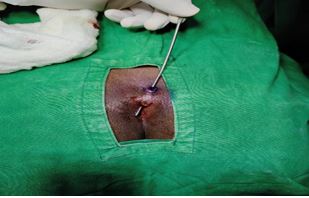Pilonidal Sinus - A Case Report
Keywords:
Excision, Kricchrasadhya, Pilonidal sinus, Salyaja Nadi Vrana, Case ReportAbstract
Pilonidal sinus is an acquired condition with significant morbidity and patient discomfort. The incidence of the disease is calculated to be 26 per 100,000 people. It has a male predominance with a ratio of 3:1. There are several methods to treat pilonidal sinus, but the recurrence rate is more. This apparently minor condition can present the surgeon with major challenges. Many of the standard surgical procedures are associated with a significant risk both of delayed healing and of recurrent disease. Location of the disease is in the natal cleft with midline positioning of the lesion associated with moisture and abundant hair poses greater threat to effective management. According to Ayurveda it can be correlated to Salyaja Nadi Vrana. Even though the disease is Kricchrasadhya, it is managed through Patana (surgery) followed by Shodhana and Ropana treatment. We report a 38 year old male patient presented with pus discharge from cleft of the buttock. Excision was done followed by diathermy and wound is treated with Jathyadi Taila dressing. Disease healed well with no recurrence in the 4months follow up period.
Downloads
References
Bailey,H.C.,Love, M,S.,Russell, R.J.,Williams,N.U., Bulstrode,C.U., & Bailey,H.U. (2008). Bailey & Love’s Short Practice of surgery (25th ed.). Edward Arnold Publishers. Pg no.1247-1248.
Bhat,S.,M. (2013). SRBs manual of surgery (4th ed). New Delhi: Jaypee Brothers Medical (P). Pg no.1036.
Farquharson M.,Moran B. (2005) Farquharson’s textbook of operative general surgery (9th ed). Great Britain: Edward Arnold Publishers, Pg no.456
Bhat,S.,M. (2013). SRBs manual of surgery (4th ed). New Delhi: Jaypee Brothers Medical (P). Pg no.1037.
Bhat,S.,M. (2013). SRBs manual of surgery (4th ed). New Delhi: Jaypee Brothers Medical (P). Pg no.1038.















